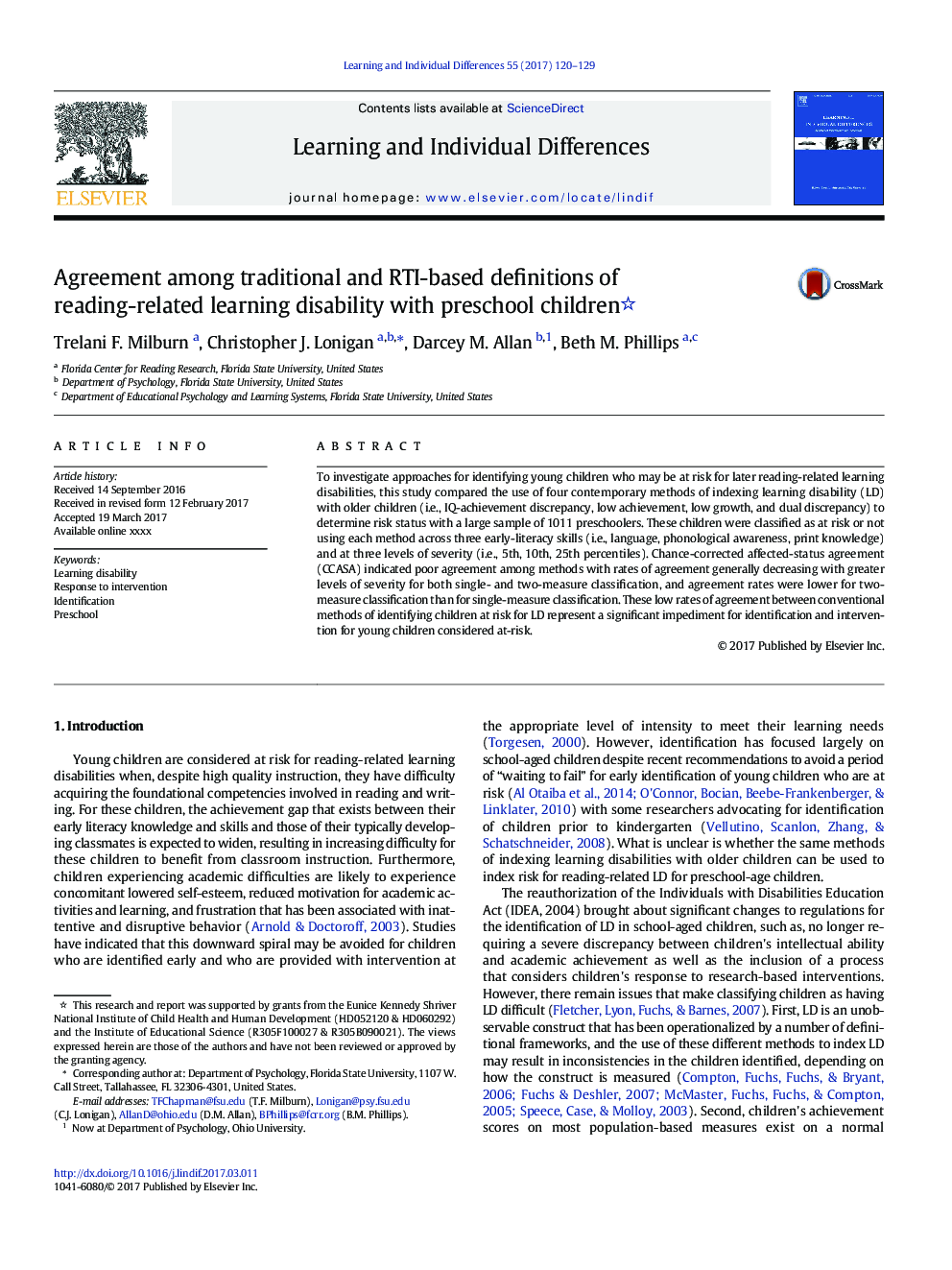| Article ID | Journal | Published Year | Pages | File Type |
|---|---|---|---|---|
| 4939984 | Learning and Individual Differences | 2017 | 10 Pages |
Abstract
To investigate approaches for identifying young children who may be at risk for later reading-related learning disabilities, this study compared the use of four contemporary methods of indexing learning disability (LD) with older children (i.e., IQ-achievement discrepancy, low achievement, low growth, and dual discrepancy) to determine risk status with a large sample of 1011 preschoolers. These children were classified as at risk or not using each method across three early-literacy skills (i.e., language, phonological awareness, print knowledge) and at three levels of severity (i.e., 5th, 10th, 25th percentiles). Chance-corrected affected-status agreement (CCASA) indicated poor agreement among methods with rates of agreement generally decreasing with greater levels of severity for both single- and two-measure classification, and agreement rates were lower for two-measure classification than for single-measure classification. These low rates of agreement between conventional methods of identifying children at risk for LD represent a significant impediment for identification and intervention for young children considered at-risk.
Related Topics
Social Sciences and Humanities
Psychology
Developmental and Educational Psychology
Authors
Trelani F. Milburn, Christopher J. Lonigan, Darcey M. Allan, Beth M. Phillips,
